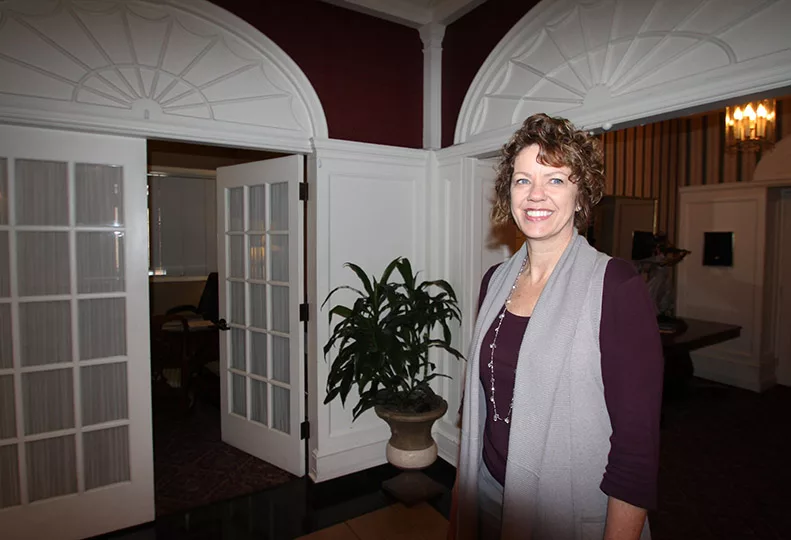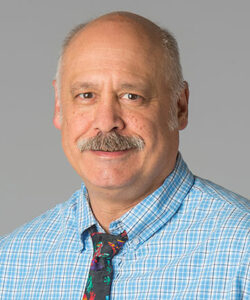Spokane Club is at crossroads
Venerable downtown group works to retain relevance

This month could mark the start of a new era for the venerable Spokane Club, says Shelley McDowell, chairwoman of the club's board of directors.
The members-only social-and-athletic club based in the city's core hopes to complete the sale of the Civic Building next door, has called for offers on its Spokane Valley property holdings, and plans to select a new general manager before the end of May, says McDowell, a broker at Century 21 Beutler & Associates' Spokane office.
In the longer term, the123-year old Spokane Club is working to turn around a 10-year decline in membership and to return to sustained fiscal health.
McDowell says the club has several efforts under way that are helping to stabilize its membership, including outreach by its marketing staff, and a referral campaign within the club's membership.
"Membership clubs and downtown clubs across the country are having challenges," McDowell says. "The challenge for us is to remain relevant and be something no one else can offer."
The focused efforts are intended to revive the club's reputation as the place for business and civic leaders to meet, she says.
"Historically, this was the place to belong," says McDowell, a 35-year club member. "I grew up here. My parents were members, and I took swimming lessons here."
Of all the issues on the club's table, perhaps at the center is the question of how the club will act on a recommendation to separate from its Valley holdings, which account for the club's $6.5 million debt.
The Spokane Club had more than 3,000 members in 2000 when it bought the Central Park Racquet Club, which had 1,100 members of its own at the time. The racquet club, at 5900 E. Fourth, was renamed the Spokane Athletic Club on Fourth Avenue. Instead of growing membership since the acquisition, the club's membership has declined to fewer than 2,700, and revenues aren't enough to sustain the debt load, McDowell says.
A recent report compiled by the club's seven-member executive advisory committee recommended that the club sell the facility or operate it as a separate entity, as part of a vision for the Spokane Club to remain viable and relevant in its second century, she says.
Adds outgoing club CEO John Pilcher, "The primary advice we've received from our members is to invest in services and offerings downtown."
The club, which was started by 20 businessmen in 1890, has been based in its current Kirtland Cutter-designed Georgian Revival clubhouse at the northwest corner of Riverside Avenue and Monroe Street since 1901.
The five-story, 65,000-square-foot structure holds the club's main restaurant and bar, 44 hotel rooms on three floors, several meeting and banquet rooms, and its administrative offices.
The Spokane Club opened its downtown athletic facility in 1968 and expanded it to its current five-story, 75,000-square-foot complex on the northwest corner of Main Avenue and Monroe. The athletic facility is just north of the clubhouse and connected to it by a skywalk over Main.
Testing the market
The club has received two unsolicited proposals for the Valley facility and has issued a call for other proposals from member groups and member brokers that might be interested in acquiring or disposing of the property, McDowell says. The deadline for proposals is May 17.
The Valley center's amenities include six indoor and four outdoor tennis courts, a workout facility, an indoor pool, and handball and racquetball courts.
"The tennis facility is unique," McDowell says. "We don't have that downtown. A new owner can operate it differently than the Spokane Club."
McDowell says about a third of Spokane Club members use the Valley facilities exclusively, and a number of other members use both the Valley and downtown facilities.
Selling off the Valley facility likely wouldn't be painless for the club, McDowell says.
"We would expect to lose some members because of losing tennis," she says.
The club also is looking at options to manage the Valley facility as more of a separate entity from its downtown facilities.
"One idea is for the Valley to have a tennis membership at one level and workout membership at a discount," McDowell says. That, however, could devalue the membership, she says.
The club also hopes to complete the sale this month of the Civic Building, which is just west of the clubhouse building at 1020 W. Riverside and for many years housed the Spokane Area Chamber of Commerce.
Pilcher says the club has received an offer that's "in the ballpark" of the $895,000 listing price for the vacant, 20,000-square-foot building.
"We received four proposals since the first of the year and settled on one that's currently under contract," Pilcher says. "We will know by the end of the month whether the sale moves forward with a particular buyer."
The Spokane Club bought the building to augment its meeting and athletic facility space in the mid-1990s, when the chamber moved to 801 W. Riverside. The planned expansion, however, never proved viable.
While the Civic Building sale appears imminent, the club's separation from the Valley facility wouldn't have to be so immediate, McDowell says.
"We're not at a crisis point today thanks to the hard work of John Pilcher, who took over as the club's CEO in 2010," she says.
Pilcher has helped cut costs while maintaining revenues, she says.
"That gives us breathing room we didn't have three years ago," she says. "But we need to do something with debt load because it's not sustainable."
Half of the club's revenues come from membership dues. The rest come from the restaurant, hotel, personal training, lessons, events, and other services offered at the club, McDowell says.
"Quite a bit of business comes from different catering events," she says.
Pilcher says the club has held annual revenues at close to $8 million for the last few years.
"Like any business going through a challenging economy, we're operating leaner and more efficiently," he says. "We're running close to breaking even for the first time in five years. We've built up cash reserves and are working on fixing our balance sheet."
The nonprofit, member-owned club currently employs 220 people, most of whom work part time, down 15 percent from staffing levels of five years ago.
Barring another slide in the economy, the club has at least a few years to resolve its debt issues, Pilcher says.
"We're moving in the right direction," Pilcher says. "The club has changed a lot in the last three years. I'm proud of the changes we've made to reduce membership losses dramatically."
Changes include adding new programs such as the Mentoring the Next Generation program, which matches the professional or life experience of a volunteer mentor with the development goals of the mentee, Pilcher says. About 60 members have volunteered as mentors, he says, and most have been matched up with younger members, harkening to the club's original core mission as a business and social club.
On the athletic-center side of the club, personal training has exploded, he says. Trainers not only work to keep younger athletes in top form, but help members in their 60s, 70s, and 80s function better in life, Pilcher says.
"We believe we've been very successful with innovative new offerings introduced just in the past few yearsfrom a mentoring program, to a wine club, to creative kids camps, events for elite athletes, and special events like special private-menu dinners for groups from four to 200," Pilcher says.
The changes are attracting younger members, he asserts.
"Our fastest growing membership categories over the pastfive years are people in their 20s and 30s, which we see as a nice trend," Pilcher says.
The club doesn't require long-term contracts from members. Dues for individuals and families range from $74 to $157 a month, plus a one-time initiation fee of up to $495.
Pilcher says the initiation fee is part of a strategy to maintain the status of the club as a special place to be, rather than using fee discounts as a strategy to gain members.
"If (member candidates) pay a higher fee, and they get in, they are more likely to stay active members," Pilcher says.
Prospective members generally are sponsored by two current members, he says.
"Often someone who doesn't have a sponsor can find someone in the membership who can serve as a reference," he says. Joining also is subject to a credit check and approval by the club's membership committee.
Changing the guard
Pilcher's tenure as the club's top executive is about to end, McDowell says, noting that he only agreed to manage the club for two to three years when he took the CEO position.
"We needed someone who could turn the club around immediately," McDowell says. "He made a huge difference in the profit-and-loss side."
McDowell says the club has nearly completed its search for its next manager.
The club fielded about 100 applications and conducted phone interviews with 11 semifinalists, five of whom were invited to the club for personal interviews.
The club hopes to make its final selection by the end of the month, says McDowell, whose term as chairwoman also will close this month as the club elects a new board of directors.
Related Articles


_c.webp?t=1763626051)

_web.webp?t=1764835652)